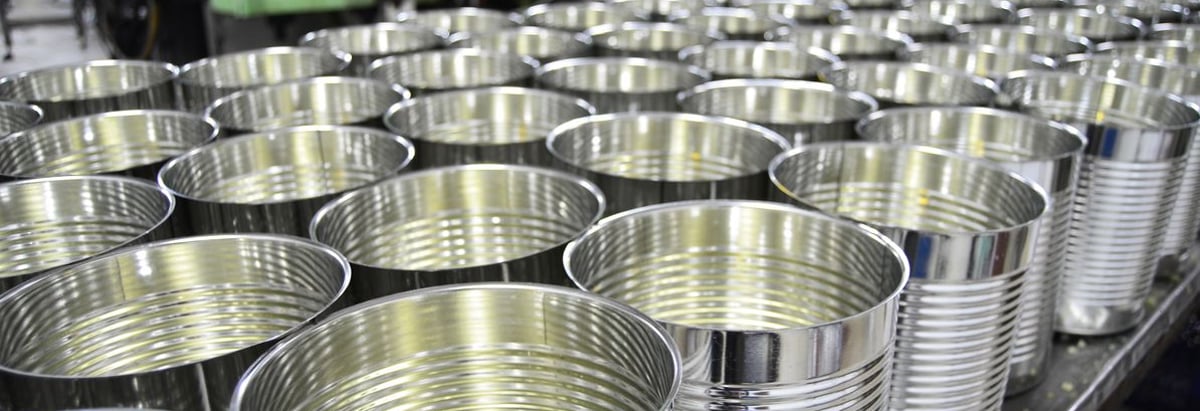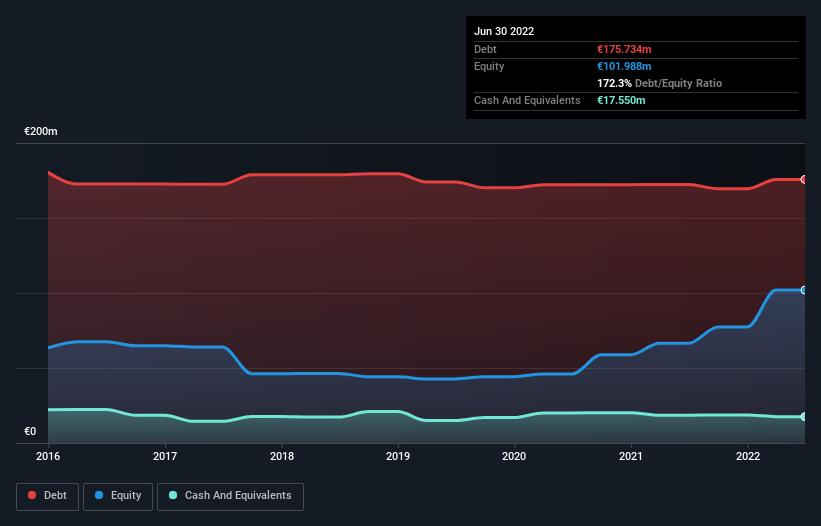- Greece
- /
- Metals and Mining
- /
- ATSE:ALMY
These 4 Measures Indicate That Alumil Aluminium Industry (ATH:ALMY) Is Using Debt Extensively

David Iben put it well when he said, 'Volatility is not a risk we care about. What we care about is avoiding the permanent loss of capital.' So it might be obvious that you need to consider debt, when you think about how risky any given stock is, because too much debt can sink a company. We note that Alumil Aluminium Industry S.A. (ATH:ALMY) does have debt on its balance sheet. But the more important question is: how much risk is that debt creating?
Why Does Debt Bring Risk?
Generally speaking, debt only becomes a real problem when a company can't easily pay it off, either by raising capital or with its own cash flow. In the worst case scenario, a company can go bankrupt if it cannot pay its creditors. However, a more frequent (but still costly) occurrence is where a company must issue shares at bargain-basement prices, permanently diluting shareholders, just to shore up its balance sheet. By replacing dilution, though, debt can be an extremely good tool for businesses that need capital to invest in growth at high rates of return. When we think about a company's use of debt, we first look at cash and debt together.
Our analysis indicates that ALMY is potentially undervalued!
What Is Alumil Aluminium Industry's Net Debt?
As you can see below, Alumil Aluminium Industry had €175.7m of debt, at June 2022, which is about the same as the year before. You can click the chart for greater detail. However, it does have €17.6m in cash offsetting this, leading to net debt of about €158.2m.

How Healthy Is Alumil Aluminium Industry's Balance Sheet?
According to the last reported balance sheet, Alumil Aluminium Industry had liabilities of €128.2m due within 12 months, and liabilities of €173.4m due beyond 12 months. Offsetting these obligations, it had cash of €17.6m as well as receivables valued at €91.5m due within 12 months. So its liabilities outweigh the sum of its cash and (near-term) receivables by €192.6m.
This deficit casts a shadow over the €67.6m company, like a colossus towering over mere mortals. So we'd watch its balance sheet closely, without a doubt. At the end of the day, Alumil Aluminium Industry would probably need a major re-capitalization if its creditors were to demand repayment.
We use two main ratios to inform us about debt levels relative to earnings. The first is net debt divided by earnings before interest, tax, depreciation, and amortization (EBITDA), while the second is how many times its earnings before interest and tax (EBIT) covers its interest expense (or its interest cover, for short). This way, we consider both the absolute quantum of the debt, as well as the interest rates paid on it.
With net debt to EBITDA of 2.7 Alumil Aluminium Industry has a fairly noticeable amount of debt. But the high interest coverage of 8.3 suggests it can easily service that debt. Notably, Alumil Aluminium Industry's EBIT launched higher than Elon Musk, gaining a whopping 116% on last year. There's no doubt that we learn most about debt from the balance sheet. But you can't view debt in total isolation; since Alumil Aluminium Industry will need earnings to service that debt. So when considering debt, it's definitely worth looking at the earnings trend. Click here for an interactive snapshot.
Finally, a company can only pay off debt with cold hard cash, not accounting profits. So it's worth checking how much of that EBIT is backed by free cash flow. Over the last three years, Alumil Aluminium Industry reported free cash flow worth 8.7% of its EBIT, which is really quite low. For us, cash conversion that low sparks a little paranoia about is ability to extinguish debt.
Our View
Mulling over Alumil Aluminium Industry's attempt at staying on top of its total liabilities, we're certainly not enthusiastic. But at least it's pretty decent at growing its EBIT; that's encouraging. Once we consider all the factors above, together, it seems to us that Alumil Aluminium Industry's debt is making it a bit risky. Some people like that sort of risk, but we're mindful of the potential pitfalls, so we'd probably prefer it carry less debt. When analysing debt levels, the balance sheet is the obvious place to start. However, not all investment risk resides within the balance sheet - far from it. We've identified 2 warning signs with Alumil Aluminium Industry (at least 1 which can't be ignored) , and understanding them should be part of your investment process.
Of course, if you're the type of investor who prefers buying stocks without the burden of debt, then don't hesitate to discover our exclusive list of net cash growth stocks, today.
New: Manage All Your Stock Portfolios in One Place
We've created the ultimate portfolio companion for stock investors, and it's free.
• Connect an unlimited number of Portfolios and see your total in one currency
• Be alerted to new Warning Signs or Risks via email or mobile
• Track the Fair Value of your stocks
Have feedback on this article? Concerned about the content? Get in touch with us directly. Alternatively, email editorial-team (at) simplywallst.com.
This article by Simply Wall St is general in nature. We provide commentary based on historical data and analyst forecasts only using an unbiased methodology and our articles are not intended to be financial advice. It does not constitute a recommendation to buy or sell any stock, and does not take account of your objectives, or your financial situation. We aim to bring you long-term focused analysis driven by fundamental data. Note that our analysis may not factor in the latest price-sensitive company announcements or qualitative material. Simply Wall St has no position in any stocks mentioned.
About ATSE:ALMY
Alumil Aluminium Industry
Engages in the design, development, and production of aluminum architectural systems in Greece and internationally.
Proven track record with mediocre balance sheet.
Market Insights
Community Narratives



